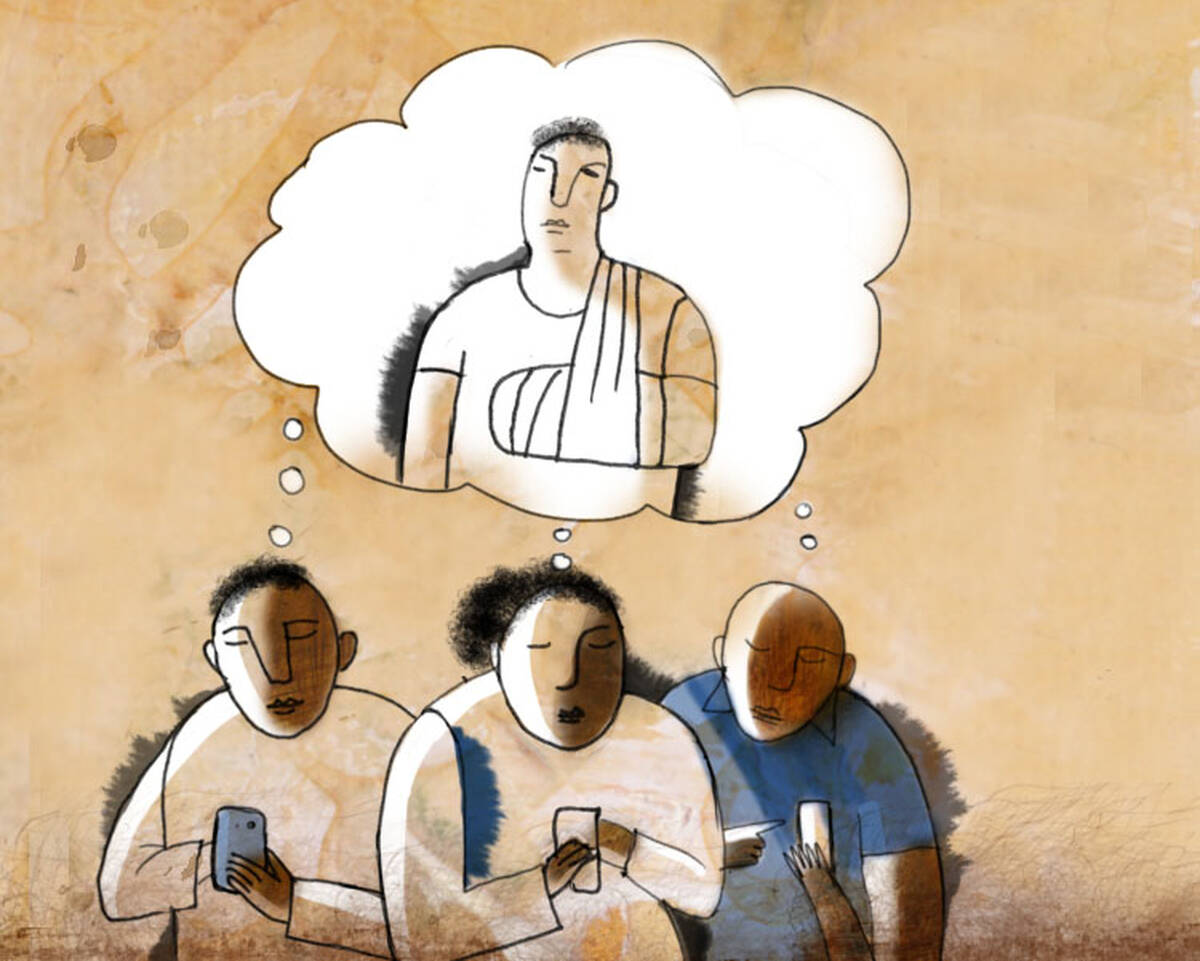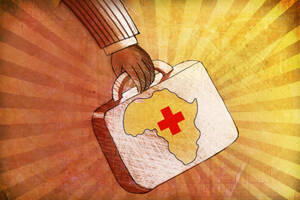Entrepreneurship Social Impact Sep 8, 2015
A Crowdfunding App that Pays the Bills
A startup in Kenya captures an underserved market.

Yevgenia Nayberg
In Kenya, community fundraising is a deeply rooted tradition. There is even a term—harambee—to describe the spirit of chipping in for critical life expenses such as weddings, funerals, and medical bills. But over the decades, as more and more Kenyans have moved from village to urban center, keeping this tradition alive has proven logistically complicated. In the absence of face-to-face encounters, donors are never quite sure whether their cash or wire transfers are making it to intended recipients, being used for wholly legitimate purposes, or whether their contributions will be publicly recognized.
In 2012, Kyai Mullei, a Kenyan-American IT consultant, and David Mark, a designer, set out to give Kenyans a cheap and easy way to donate money for any critical life expense. Together they launched M-Changa (changa means both “collect” and “donate,” reflecting Kenya’s culture of reciprocity), a mobile app that allows anyone to solicit help by “hosting” a fundraiser that details exactly what the money is for. Donors contribute by text message using an independent mobile payment service, M-Pesa. When the host withdraws the full amount from M-Changa’s mobile platform, the company collects a flat rate of 4.25 percent.
The full Kellogg case, “M-Changa: Leveraging Kenya’s Mobile Money Market for Community Fundraising” is available for corporate training or university classrooms.
M-Changa was founded with Kenyans’ unique needs squarely in mind. “In the U.S., there’s this idea that an app by itself can solve the problem,” says Sarit Markovich, a clinical associate professor of strategy at the Kellogg School, who recently wrote a case about the company. “But you don’t just need an app. What you need is an understanding of the conditions people live in and a strategy for addressing genuine pain points.”
The Next Phase of Mobile Money
The rise of mobile payment services has been a game-changer in Kenya. “It addresses a huge need,” says Markovich. “And what’s amazing is that everything is done with a basic phone—you don’t even need a smartphone.”
Before M-Pesa, most urban-based Kenyans relied on family, friends, or semiprofessional couriers (usually bus or taxi drivers) to hand-deliver money—a method both slow and prone to theft. The other, safer choice was to wire funds through money-transfer services such as MoneyGram or Western Union, which few could afford. By tapping into the meteoric rise of the mobile phone market—almost 80 percent of Kenyans had mobile phones by 2014—M-Pesa solved a problem for millions of urban and rural poor. “These are people who might not have electricity, people for whom even getting to a bank would be a challenge,” Markovich says. “And yet they have these phones, so they can send and receive money.”
“What’s amazing is that everything is done with a basic phone—you don’t even need a smartphone.”
Mullei and Mark recognized mobile’s potential to facilitate community fundraising, even more so than web-based fundraising options such as Indiegogo. They aimed M-Changa, which builds on M-Pesa, at fundraisers and donors alike. For fundraisers, M-Changa offers an easy way to solicit and collect donations. Fundraisers are spared the task of having to contact every person in their network individually: a single message does the trick. And since all donations—from cash deliveries to wire transfers—are received through the same mobile platform, fundraisers no longer face the hassle of managing various forms of payment. For their part, donors—aside from saving money on couriers or transfer fees—are guaranteed that their contributions will be spent for their intended purposes.
The Cultural Value of Transparency
Donors also benefit from the transparency of the fundraising process—something that, for a variety of cultural reasons, Kenyans highly value. M-Changa’s service is not like most traditional microloan structures. In keeping with the spirit of harambee, lenders do not expect repayment, but they do want to know how the money is spent, and they expect to earn social credit for having made a contribution.
“This is not anonymous charity,” Markovich says. “It’s one thing to give a percentage of your income to an organization whose cause you respect. It’s another thing to donate money for a neighbor’s funeral, or a cousin’s wedding, or a friend’s surgery. You know this person. These are specific donations for a specific community purpose. Knowing who donated is part of the culture. If people know that I donated—and how much—it’s going to give me more respect in the community.”
With this in mind, the company’s founders understood that to make their service attractive, it was important to ensure transparency. All contributions are easy to track, which minimizes the chances of fraud and also guarantees that donors receive social credit. And thanks to a partnership with MasterCard, fundraisers can link their account to either a credit or debit card, so that any purchases automatically appear on the host’s M-Changa fundraising page. This gives donors a chance to see how the funds are being used, and creates what Mullei calls “360-degree transparency.”
A Community Bank
Markovich sees great potential for a company like M-Changa. With mobile money on the rise in Kenya, but also in Tanzania, Uganda, Ethiopia, and Nigeria, there is no shortage of customers. That includes the millions of people living and working in other countries who send remittances home to support their families and communities.
“These young people who go abroad and find themselves with higher incomes—they still want to participate in the community, and this is one way to do that,” she says. “If they choose to go back, they won’t be strangers. They helped their neighbor; they helped their cousin. They know what’s going on, and they are still a part of that life.”
But the implications of financial innovations like M-Changa extend beyond the African continent. For Markovich, organized community fundraising offers a local variation on the traditional savings account. “When it comes to a savings account, the bank takes that money”—collected by community members—“and invests it however it chooses,” she says. “What’s happening in Kenya seems to be that instead of a bank, the community decides how to allocate those funds. The community itself is acting as a kind of banking service.”
Examples of this kind of de facto community banking have been a fixture of village life for centuries. The prototype for “peer-to-peer” lending is the “rotating savings and credit association,” where members contribute equally to a fund that is then allocated to a single member at every meeting, giving members access to sums that are large enough to cover unexpected or critical life expenses. M-Changa’s model builds upon this traditional safety net.
Traditional Partnerships
So should banks—and other financial companies—feel threatened by community fundraising on mobile platforms? Not necessarily. Companies like M-Changa rely on banks to act as partners.
This year, the company worked out a deal with Equity Bank—an East African bank known for serving disadvantaged populations—so that M-Changa users could donate using Equity’s mobile wallet service or even the bank’s ATMs. And finance companies stand to gain from the partnership as well. MasterCard, which lags behind Visa in terms of brand recognition and market share in Kenya, hopes to use its relationship with M-Changa to increase awareness and gain greater access to Kenyan’s merchants and banked as well as unbanked customers. “I see them as a compliment, not a threat,” Markovich says. “In fact, banks should want companies like M-Changa to succeed.”
Markovich expects that more financial innovation is on the way, as companies continue to offer alternative banking services to people for whom traditional banking is simply not an option. To succeed, however, these companies will need to see the world through their customers’ eyes. “I think the most successful companies will be those that understand their customer’s pain points and find new ways to address them,” she says. “In fact, that is what drives innovation.”


